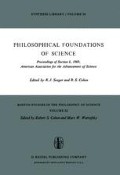Abstract
Leonardo da Vinci can be regarded as a person from several points of view: his vocation as an artist, his profession as an engineer (essentially military, including civil engineering in those days), his avocation as an amateur of nature. The resulting views, however, are not independent. Leonardo, therefore, must be looked upon as a whole person; indeed, he must be continually re-viewed by each generation, individually by each person.
Access this chapter
Tax calculation will be finalised at checkout
Purchases are for personal use only
Preview
Unable to display preview. Download preview PDF.
Bibliography
Kenneth Clark, Leonardo da Vinci, Penguin, Harmondsworth, 1968.
Ivor B. Hart, The World of Leonardo da Vinci, Kelley, Clifton, N.J., 1970
John Herman Randall, Jr., The Place of Leonardo da Vinci in the Emergence of Modern Thought’, in Roots of Scientific Thought (ed. by P. P. Wiener and A. Noland ), Basic Books, New York, 1957
C. Truesdell, ’Leonardo da Vinci’, The Johns Hopkins Magazine XVIII (1967) 29-41 (a); Essays in the History of Mechanics, Springer-Verlag, Berlin, 1968 (b).
C. D. O’Malley (ed.), Leonardo’s Legacy: An International Symposium, University of California Press, Berkeley, Calif., 1968.
Edward MacCurdy (ed.), Notebooks of Leonardo da Vinci, George Braziller, New York, 1955 (a); The Mind of Leonardo da Vinci, Dodd Mead, New York, 1939 (b)
Pollio Vitruvius, On Architecture (transl. by F. Granger), 2 vols, Heinemann, London, 1931 and 1934
Walter Pater, Renaissance, New American Library, New York, 1959.
H Rouse and S Ince, History of Hydraulics, Dover, New York, 1957.
Giorgio Vasari, Lives of the Artist (transl. by G. Bull), Penguin, Harmondsworth, 1970
Author information
Authors and Affiliations
Editor information
Rights and permissions
Copyright information
© 1974 D. Reidel Publishing Company, Dordrecht-Holland
About this chapter
Cite this chapter
Seeger, R.J. (1974). On the Physical Insights of Leonardo Da Vinci. In: Seeger, R.J., Cohen, R.S. (eds) Philosophical Foundations of Science. Boston Studies in the Philosophy of Science, vol 11. Springer, Dordrecht. https://doi.org/10.1007/978-94-010-2126-5_3
Download citation
DOI: https://doi.org/10.1007/978-94-010-2126-5_3
Publisher Name: Springer, Dordrecht
Print ISBN: 978-90-277-0376-7
Online ISBN: 978-94-010-2126-5
eBook Packages: Springer Book Archive

